The Piaget Polo Skeleton (With Video)
Piaget’s luxury sports watch slims down to host an impressive skeletonised movement.
The Piaget Polo luxury sports watch collection has recently been extended with a fascinating skeletonised model. Leaner than the two existing models in the collection, the distinctive cushion-shaped case of the 42mm steel Piaget Polo frames the refined mechanics of the ultra-thin skeletonised calibre. The curvaceous architecture of the bridges and mainplate allows light to penetrate the calibre from both sides of the case. Available in blue or grey, the Piaget Polo Skeleton is proof positive that the bold, contemporary shape of Piaget’s luxurious sports watch is perfectly compatible with the ethereal elegance and beauty of a skeletonised calibre. Something you can admire in the video on top of this article.
Genesis
Yves G. Piaget, the fourth generation of the Piaget dynasty, was the brainchild of the Polo. With the brand’s celebrated reputation as a watchmaker and jeweller, Yves Piaget trained as a watchmaking engineer and a gemmologist to join the family business in 1966. His passion for horses and equestrian events led the brand to sponsor the largest polo tournament in the world for six years and provided Yves Piaget with the perfect milieu to promote the Polo watch. Harnessing the brand’s expertise in watchmaking and jewellery, the Polo, launched in 1979, was a sleek bracelet watch with a contemporary sporty/chic vibe. With its fully integrated bracelet, the design was a continuous stream of solid sculpted gold bars that wrapped around the wrist. After Ursula Andress was pictured wearing the watch at the 1980 World Polo Cup in Palm Beach, the model was catapulted into the limelight. Fitted with Piaget’s ultra-thin quartz calibre 7P – considered to represent the height of technology in its day – the Polo accounted for almost one-third of the brand’s sales.
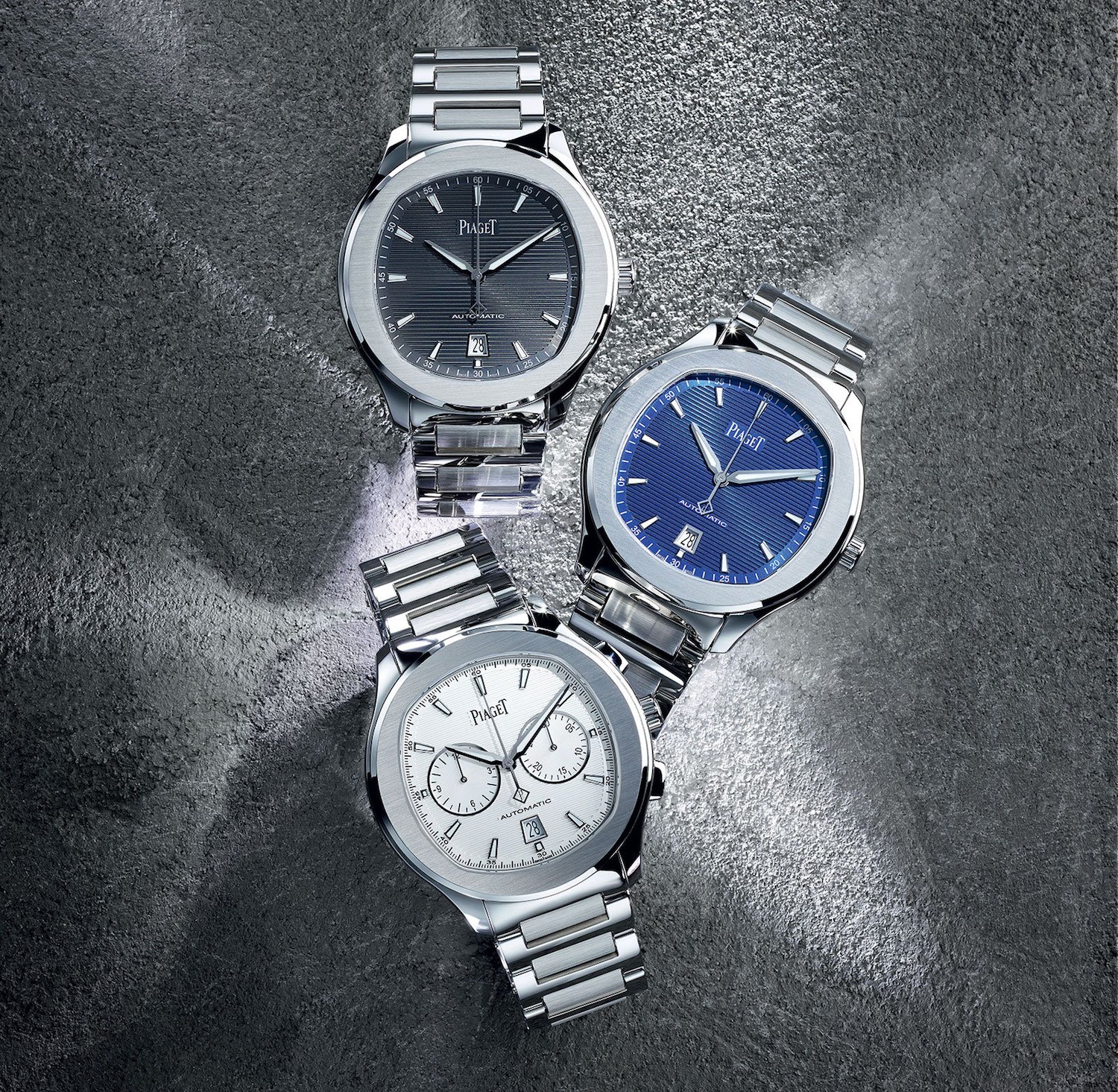
In 2016, the Polo underwent a radical makeover resulting in the Polo S, a cushion-shaped luxury sports watch that added stainless steel to the mix for a more casual attire. Positioned as the brand’s entry-level luxury sports watch, the distinctive profile of the 42mm steel case recalled the silhouette of the high-end Emperador family. The Polo S, offered initially in time-and-date and chronograph versions, boasted a relatively thin profile in keeping with the brand’s hallowed tradition of ultra-thin movements.
Starting in 1957 with hand-wound calibre 9P and followed by automatic calibre 12P in 1960, the thinnest manual and automatic calibres in the world at that time, Piaget initiated its foray into the world of lean movements. Piaget’s pursuit of ultra-thin calibres extended beyond the technical accomplishment and was always at the service of elegance. Ultra-thin calibres translated into hyper-refined, lithe dress watches for both men and women that were unlike anything else on the market. In 2018, Piaget reclaimed its dominion of ultra-slim movements with the impossibly thin 2mm case height of the Altiplano Ultimate Concept prototype. Smashing every existing record in the lean machine wars, the triumphant and extraordinarily refined Altiplano Ultimate Concept finally made it into production in 2020 and will be a tough act to follow.
The latest Piaget Polo Skeleton is a compendium of Piaget’s long-standing expertise in ultra-thin movements, its mastery of the art of skeletonisation – featured predominantly on its high-end models- and its legacy of exquisite finishings.
A leaner case
The challenge for Piaget’s watchmakers was to integrate an ultra-thin skeletonised calibre inside the bold cushion-shaped steel case of the Polo. We all know how elegant a skeletonised calibre can look on board an Altiplano, but adapting it to the sportier Polo was a different kettle of fish. How do you reconcile the delicate, almost ethereal beauty of a skeletonised movement with a more robust luxury sports watch?
The solution was to reduce the 9.4mm case height of the classic Polo by 2.9mm to achieve a new case height of just 6.5mm. Naturally, the 42mm diameter and the lively finishings that distinguish the Piaget Polo were respected. From the horizontal satin-brushed surface of the wide bezel and its polished chamfer to the middle case’s brightly polished surfaces and contrasting brushed sides, the dynamic finishings that give the Piaget Polo its luxury sports watch character are executed throughout.
Two Moods
The beautiful movement revealed on both sides of the case is Piaget’s calibre 1200S1, a skeletonised version of the existing automatic calibre 1200P. Entirely developed and produced in-house, the calibre boasts a wafer-thin height of 2.4mm. Two models, one with blue PVD mainplate and bridges and the second in a slate grey tone, set the stage for the spectacular mechanical show.
The skeletonisation is bold and contemporary, offering fascinating vistas of the movement and allowing light to flood the stage from both sides of the case. The openworked dial is framed by an inner flange with a minutes track and the characteristic triangle-shaped Polo hour markers that reach out from the track and are suspended over the dial. The supporting structure features beautiful curves that trace a unique landscape of negative space and components. A generous view of the mainspring barrel, the balance wheel, the escapement train and the off-centred grey micro-rotor materialise front and back, revealing a fascinating insight into the mechanics of calibre 1200S1.
The plates and bridges on both models display satin-brushed surfaces and refined hand-bevelled edges. The blue model, a colour that is intimately associated with Piaget, offers a sharper, more contrasted view. To ensure that nothing hampers the spectacle, the Alpha-style hour and minute hands are also skeletonised. The mood, however, of the two models couldn’t be more different. The bright blue model attracts attention and imparts a livelier, more extroverted personality. The slate grey model reveals a more restrained, more formal personality with its uniform monochromatic grey suit punctuated by bright pink rubies.
Calibre 1200S1
Calibre 1200S1 is the skeletonised version of the 1200P, one of the thinnest automatic movements available. Calibre 1200P, with its height of 2.35mm, is used inside Altiplano Ultra-Thin models, while the 1200S, with a height of 2.4mm, has been used in Altiplano Skeleton models in the past. Running at 3Hz/21,600vph, the 1200S1 calibre stores about 44 hours of energy when fully wound. To ensure the highest possible level of thinness, an off-centred micro-rotor winds the movement. Other slimming measures include the reduction of the bridge over the hour wheel to a width of just 0.11mm.
Visible from both sides, the finishings reveal their elegant Piaget pedigree. The bridges and mainplate are drawn by hand and decorated with a satin-brushed sunburst motif. The tungsten oscillating weight is engraved with the Piaget coat of arms on the reverse side of the watch, and even the wheels are decorated with circular satin-brushed and sunburst motifs.
Versatility
The Piaget Polo Skeleton is the first watch of this collection to come with two strap options. All Piaget Polo watches come with a sporty H-design steel bracelet with a folding clasp and beautifully polished and satin-finishes. To underscore the innate elegance of the skeleton model, the watch is also delivered with a blue or grey leather strap to match the colour of the dial with an ardillon buckle. Thanks to a practical fast-release system, you can switch between the bracelet and the strap in just seconds, without the need for tools.
Availability & Price
Whether in galvanic grey or in blue PVD, both references of the new Piaget Polo Skeleton retail for CHF 28,700 or USD 28,500 and are delivered with a steel bracelet and an alligator strap. They are now available from boutiques and online, at www.piaget.com.

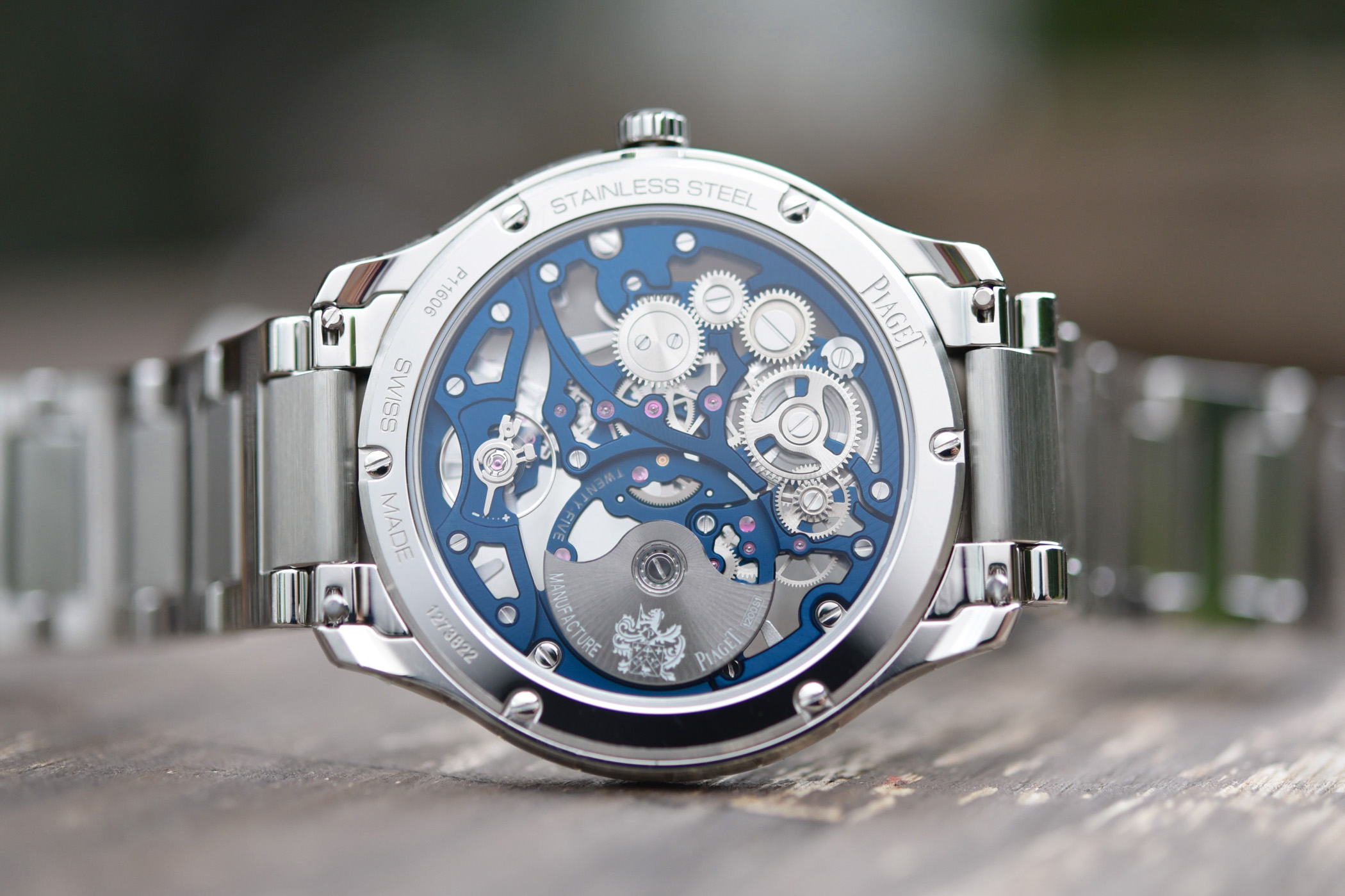

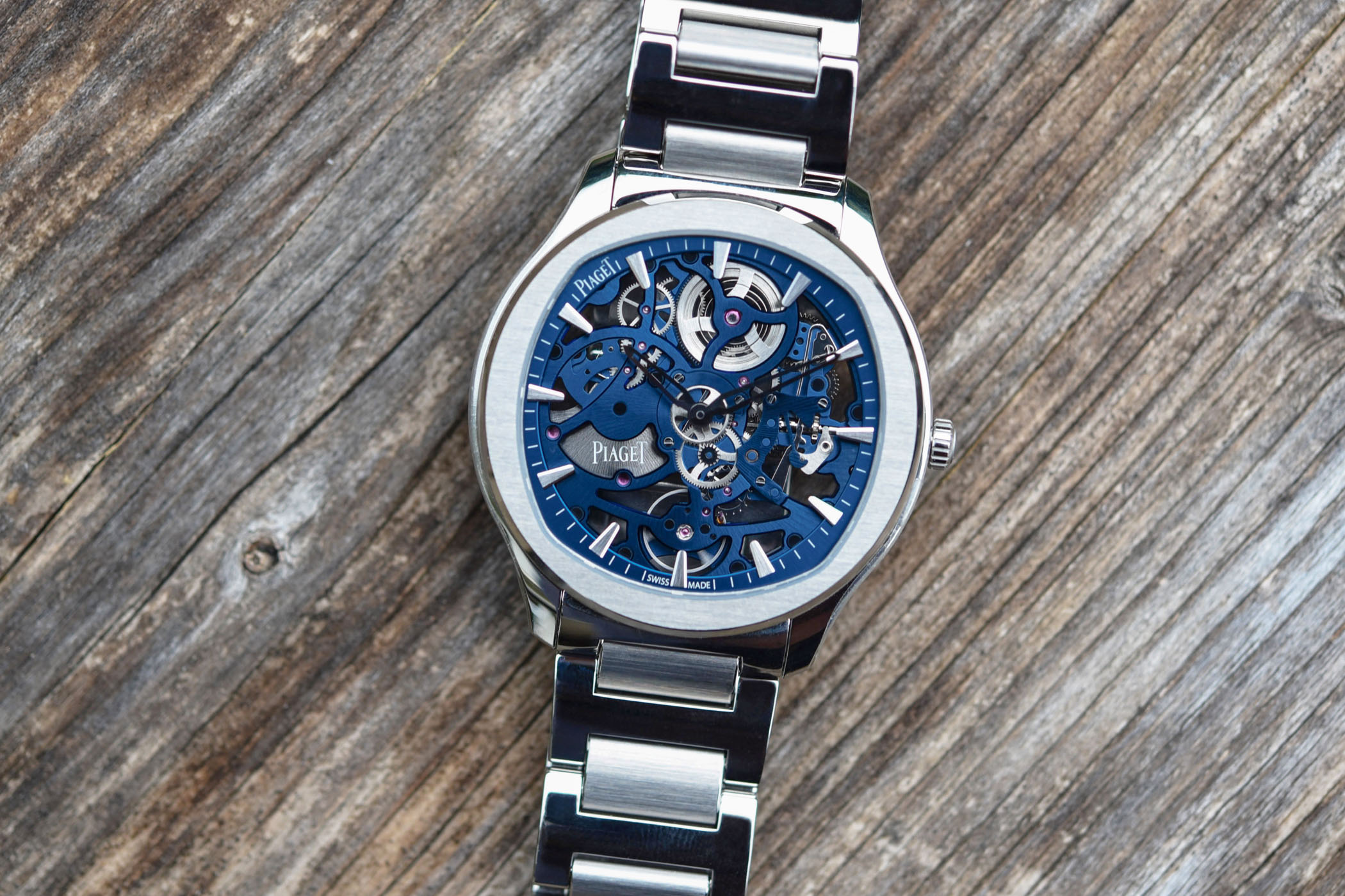
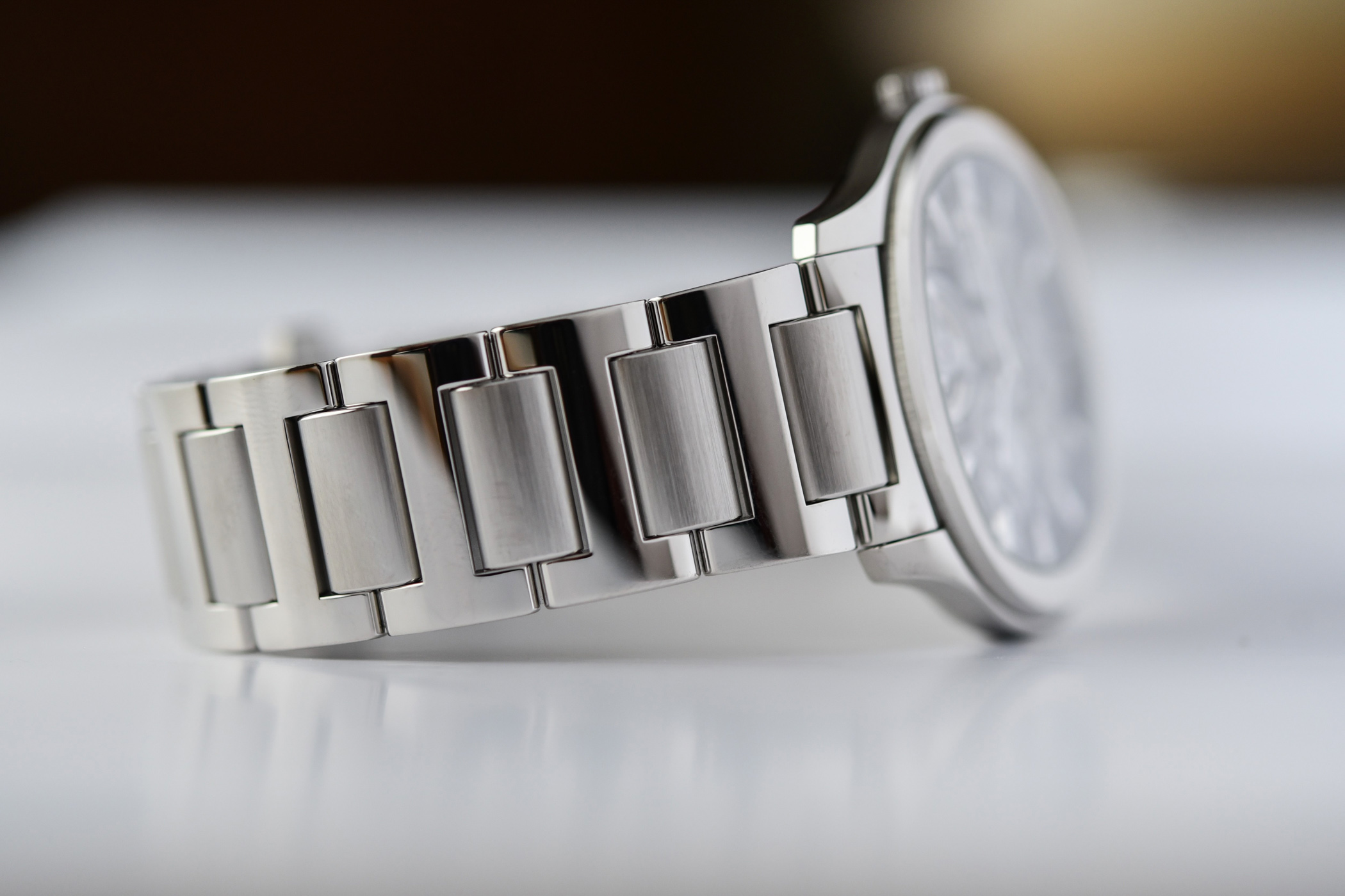

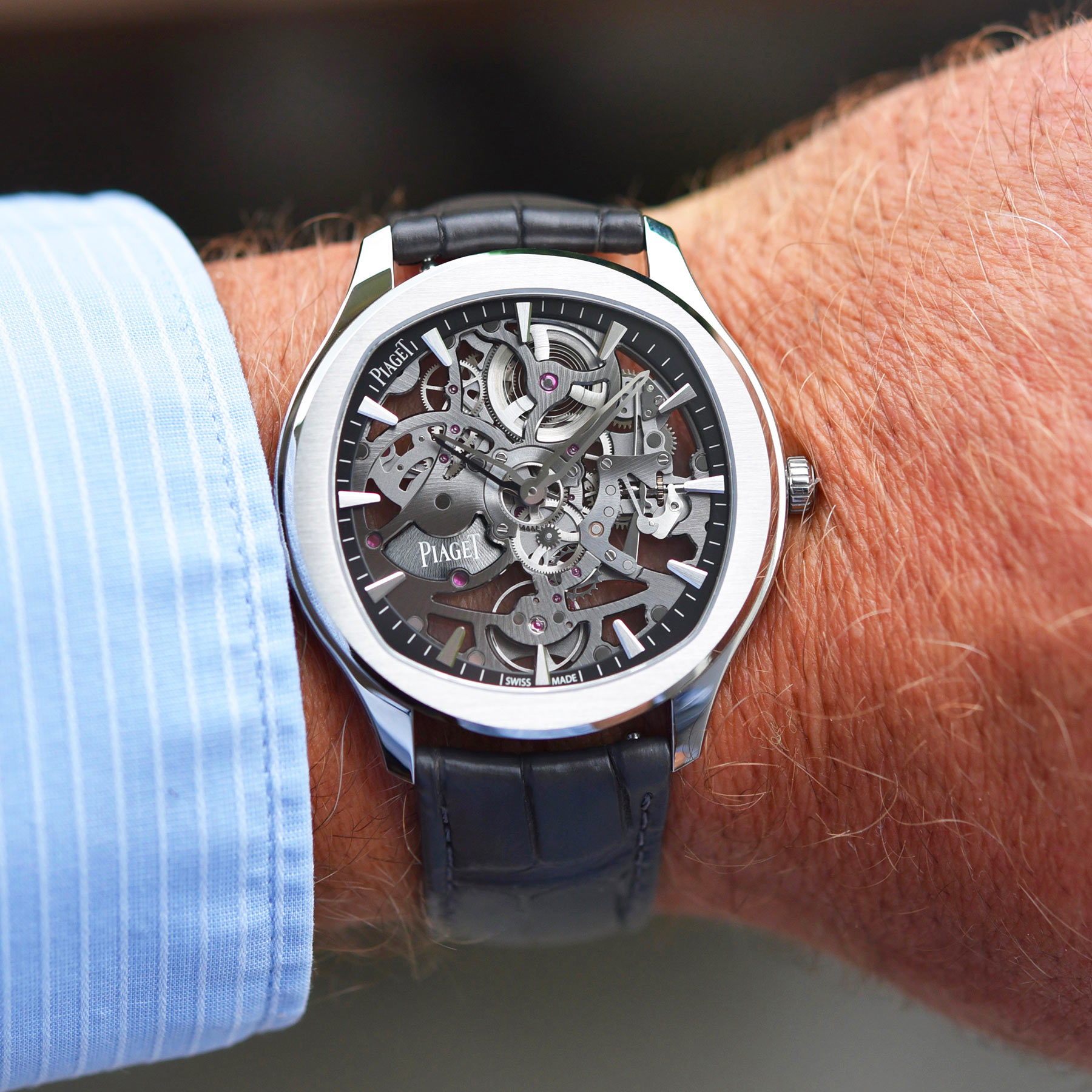
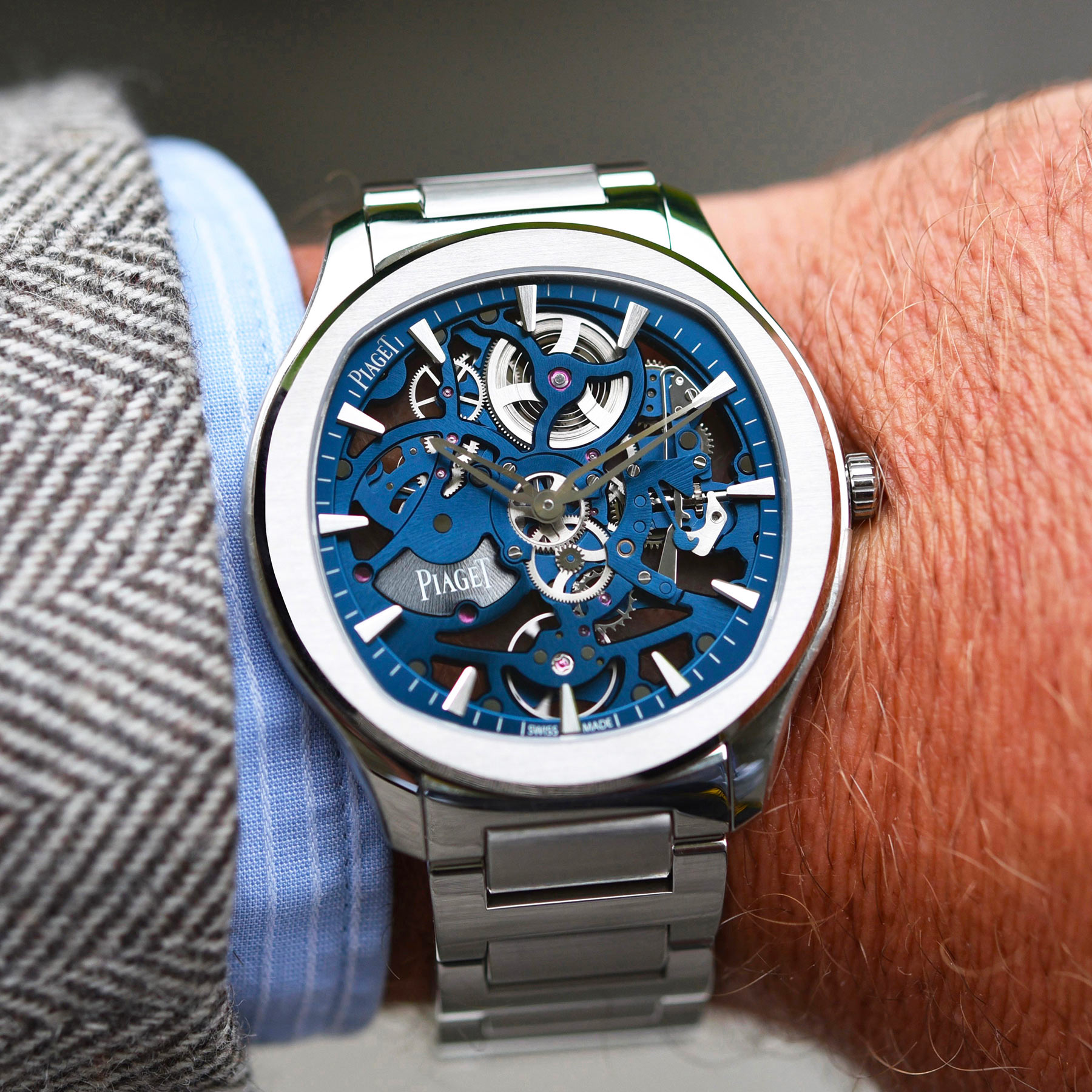
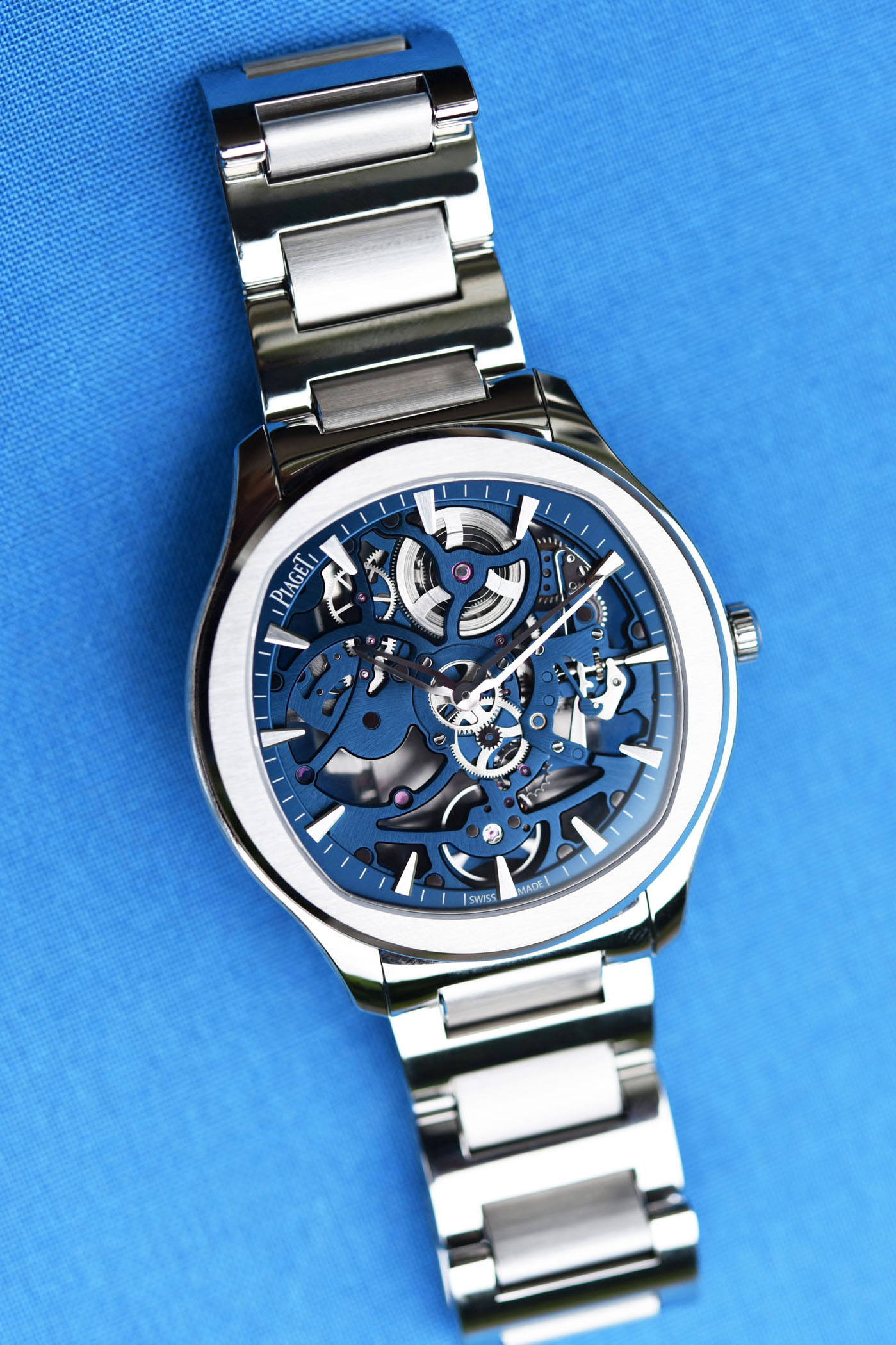
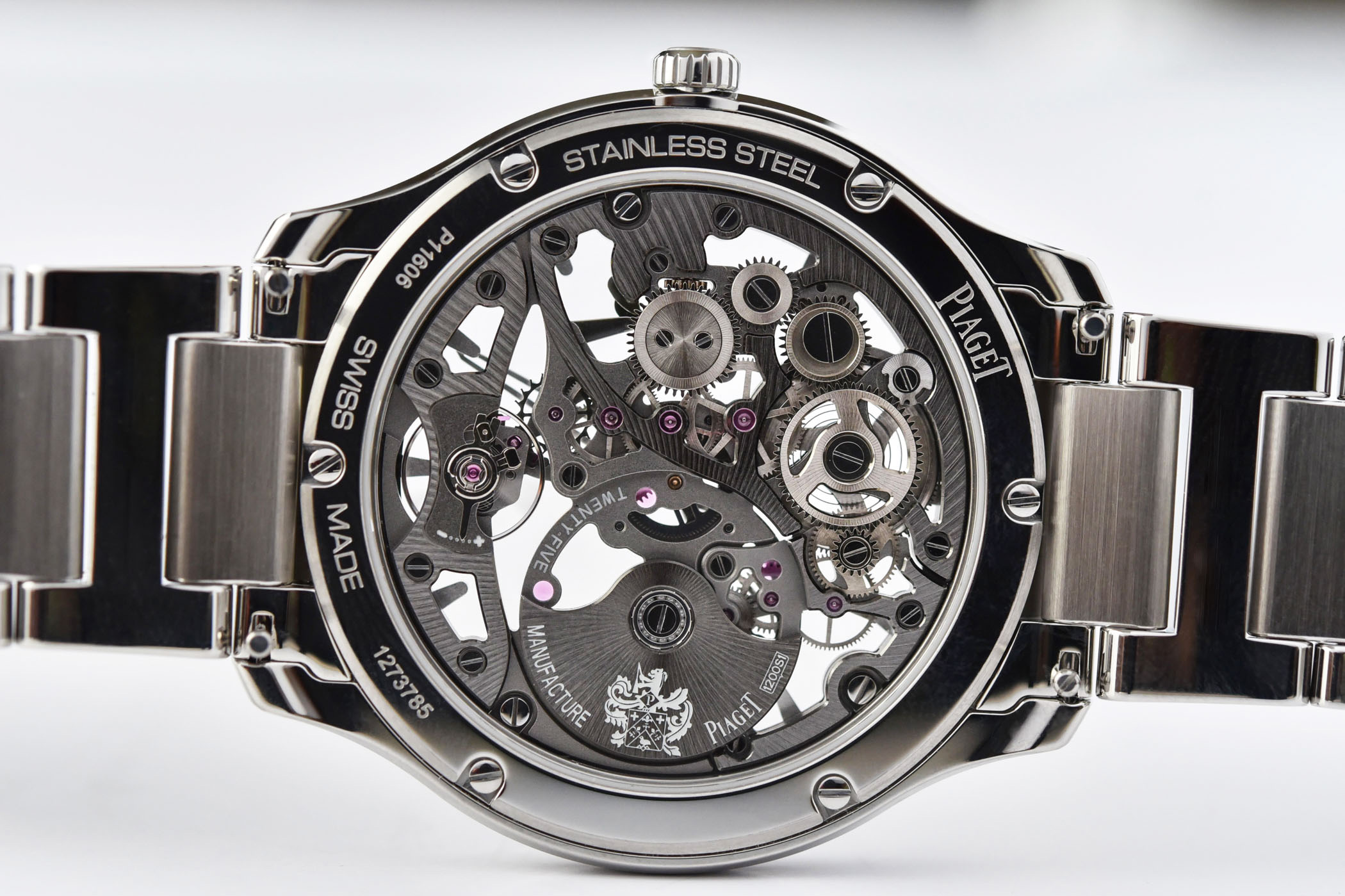
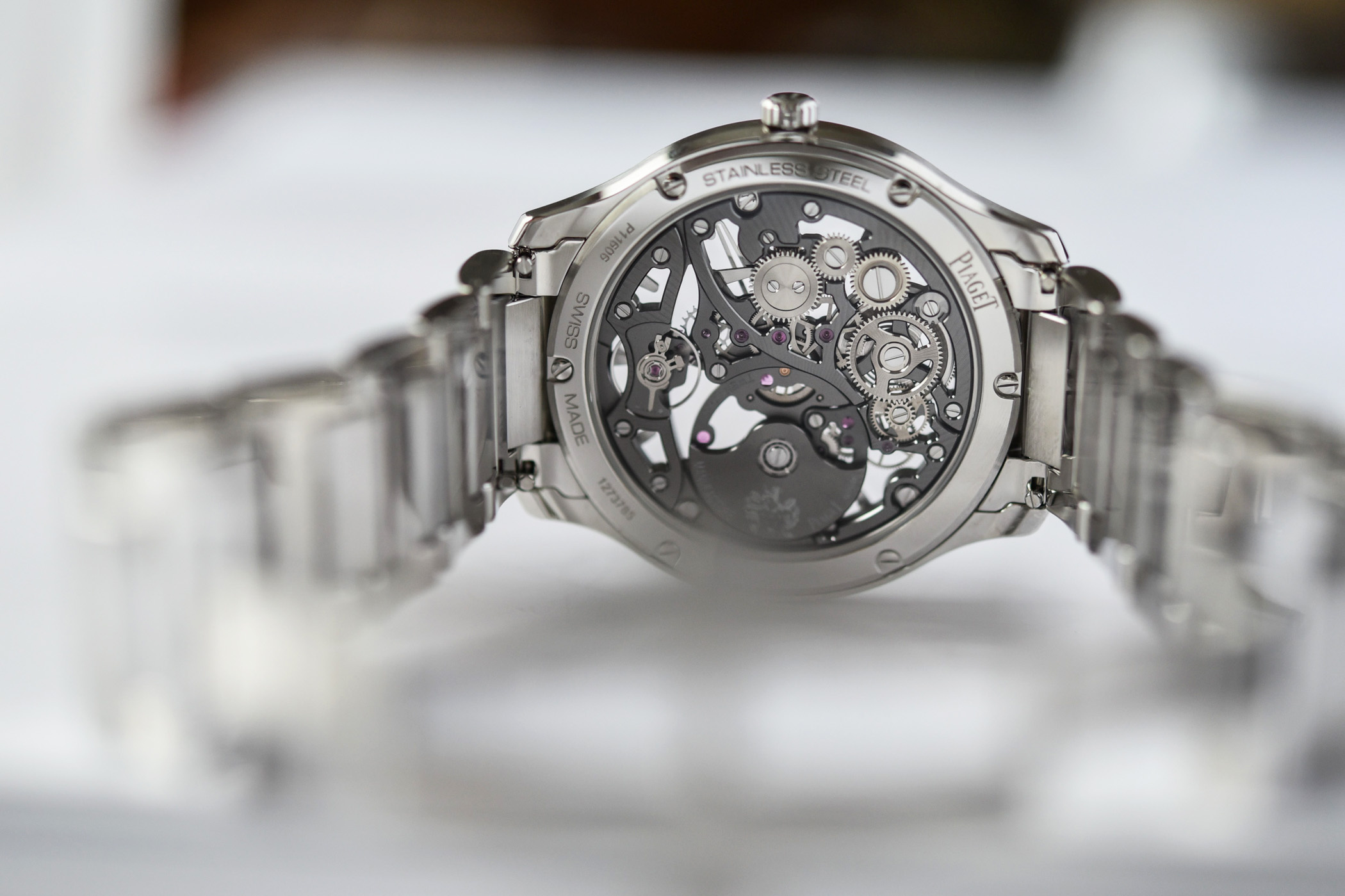



2 responses
Best article yet on the Polo S Ultra Thin. I really like it and it, somehow looks less wide than the rest of the range. I have tried them all on and preferred the Chrono version but not enough to buy. Hopefully they will do a non skeleton version at a lower price point.
I can see this working if you have a 8 inch wrist, otherwise the proportions are like squishing something so that it is thin, but you have now an extra width issue you didn’t want to deal with. Like is said if you have a 8 plus wrist, it should work but then it may look a bit “delicate” on you ?